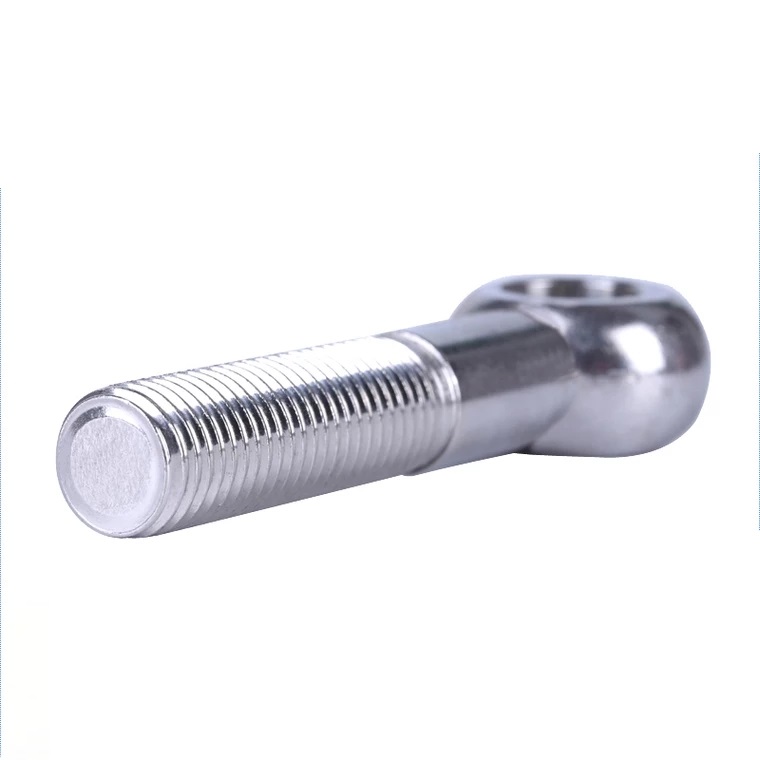

At which point you may then decide to specify an anchor bolt that matches the leaf chain’s strength – but this is not strictly necessary – the anchor bolt strength only needs to exceed your required strength.Īs the slot and hole dimensions are of fixed, standard sizes, there is limited scope for varying the head dimensions. It is accepted practice and a part of most machinery standards that leaf chain anchors should be equal in strength to the leaf chain that is attached to them.īut for various reasons you may have over specified the leaf chain – using a leaf chain that is well over the safety factor you are working to in your design. The thread strength also needs to be equal to, or greater than, the strength of the leaf chain.

This surface area needs to be sufficient to provide a strength equal to, or greater than, the Ultimate Tensile Strength (UTS) of the leaf chain. The surface area of the head and slots affect tensile and shear strength. Leaf chain anchor bolts see varying forces, so when designing new leaf chain anchor bolts you need to look at two key areas, the head strength and the thread strength. Using this standard will ensure interchangeability should a purchasing team decide to change suppliers, or another brand of leaf chain is fitted as a replacement. While each manufacturer’s leaf chain can have slightly different dimensions, we would always recommend making the slots and holes to the sizes shown in ISO4347. Here are the main considerations when designing an anchor bolt for use with a leaf chain. Leaf chain anchor bolts are a crucial part of a leaf chain assembly – if they are not designed without considering all the relevant factors then they may not conform to industry standards or they may even fail. They are also available in other materials including stainless steel.įor an easy to read chart, view our Anchor Bolts Length Chart.Key considerations when designing leaf chain anchor bolts Most swedge bolts are hot dipped galvanized and come in diameters ranging from 5/8” to 4”. Swedge bolts are 100% domestic, as they are used to connect girders and piers. “Swedged” means one end will have multiple indentions to allow concrete to flow into them. Swedge bolts consist of round bar steel that is threaded on one end and “swedged” on the other. At Birmingham Fastener, we distribute straight with headed anchor bolts in 1/2”-2” diameter and any length required in the following standards: A307, F1554 -36, F1554-55, F1554-105, A193 B7, 304 Stainless, 316 stainless, and any grade the customer may require. The head is embedded into the concrete to secure a variety of constructions including structural columns, bridge railing, and light poles. It is typically a hex, heavy hex, or square head. Unlike most anchor bolts, headed anchor bolts have a forged head on their unthreaded end. At Birmingham Fastener, we distribute straight with plate bolts in 3/8”-4” diameter and any length required in the following standards: A307, F1554 -36, F1554-55, F1554-105, A193 B7, 304 Stainless, 316 stainless, and any grade the customer may require. Plate bolts are used primarily in constructing columns for buildings, highway signs, and other applications. The plate can either be welded to the anchor bolt itself, or it can be tack welded to a nut entrenched in concrete. These types of anchors are double end rods with a plate washer added to one end. At Birmingham Fastener, we distribute L-shaped bolts in 3/8”-2.5” diameter and any length required in the following standards: A307, F1554 -36, F1554-55, F1554-105, A193 B7, 304 Stainless, 316 stainless, and any grade the customer may require. L-Shaped anchor bolts are used in a variety of applications including light poles, sign structures, heavy equipment and tooling. Let’s go over each type of anchor bolt and how they are used in structural applications each day. Each type has their own uses, sizes, and advantages. There are four main types of anchor bolts: L-shaped, double end rods with plate, headed, and swedge. One end is embedded into the concrete, while the opposite end is threaded to attach structural support. In our industry, anchor bolts are typically used to attach steel to concrete. T-Head Bolt and Mechanical Joint Gasket PacksĪnchor bolts are designed to attach structural elements to concrete.


 0 kommentar(er)
0 kommentar(er)
